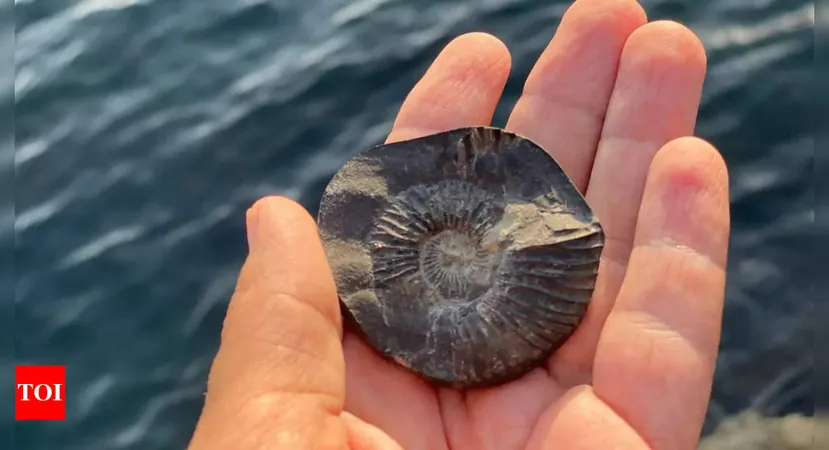
Unveiling the Evolutionary Secrets of Animal Nervous Systems: A Stunning Fossil Discovery
2025-01-12
Author: Daniel
Introduction
In an astonishing breakthrough, a team of international scientists has shed light on the early evolution of the nervous system in ecdysozoan animals, a diverse group that includes insects, nematodes, and priapulid worms. Their ground-breaking research reveals that the common ancestor of these creatures likely had a single ventral nerve cord, a significant evolutionary trait that has profound implications for our understanding of movement coordination among these organisms.
Research Significance
The study, which was recently published in *Science Advances*, delves deep into the origins of the ventral nerve cord, focusing on fossils from the basal Cambrian period. This research is crucial, as it illuminates the evolutionary trajectory of nervous system structures that are still present in modern animals. The collaborative effort brought together experts from notable institutions such as Northwest University, Université de Lyon, Queen Mary University of London, and Rey Juan Carlos University.
Fossil Analysis
By analyzing fossils from key Cambrian deposits, specifically targeting Scalidophora, a subgroup of Ecdysozoa, researchers discovered long nerve-like structures along the ventral side of these ancient organisms. These findings closely resemble the ventral nerve cords observed in contemporary priapulids, providing essential clues about their evolutionary path.
Expert Insights
Dr. Deng Wang and Dr. Jean Vannier emphasized the importance of this research, stating that the fossils contain clear impressions of single ventral nerve cords, suggesting that this configuration may represent the ancestral condition of scalidophorans. Their phylogenetic analysis supports the hypothesis that the earliest ecdysozoans possessed a single ventral nerve cord, challenging previous notions and indicating that the paired nerve cords seen in arthropods, kinorhynchs, and loriciferans likely evolved independently.
Dr. Chema Martin-Durán added further insight: 'This leads us to propose that the paired nerve cords observed in various groups are derived traits that emerged through separate evolutionary pathways.'
Broader Implications
The implications of this research extend beyond mere academic interest; understanding how these nervous system adaptations occurred can provide critical insights into the evolutionary pressures that shaped the development of complex movement patterns, especially during the Precambrian-Cambrian transition. Dr. María Herranz mentioned, 'The evolution of paired nerve cords likely enhanced movement coordination in segmented animals, which corresponds with the emergence of advanced locomotion capabilities.'
Conclusion
As scientists continue to unravel the intricate tapestry of evolutionary biology, discoveries like these paint a clearer picture of how early life forms adapted to their environments. Such findings do not just enrich our knowledge; they also foster a deeper appreciation for the complexities of life and the adaptations that have led to the biodiversity we observe today. Stay tuned for more astonishing revelations in the world of evolutionary science! Check out our latest updates and discussions on social media.
 Brasil (PT)
Brasil (PT)
 Canada (EN)
Canada (EN)
 Chile (ES)
Chile (ES)
 Česko (CS)
Česko (CS)
 대한민국 (KO)
대한민국 (KO)
 España (ES)
España (ES)
 France (FR)
France (FR)
 Hong Kong (EN)
Hong Kong (EN)
 Italia (IT)
Italia (IT)
 日本 (JA)
日本 (JA)
 Magyarország (HU)
Magyarország (HU)
 Norge (NO)
Norge (NO)
 Polska (PL)
Polska (PL)
 Schweiz (DE)
Schweiz (DE)
 Singapore (EN)
Singapore (EN)
 Sverige (SV)
Sverige (SV)
 Suomi (FI)
Suomi (FI)
 Türkiye (TR)
Türkiye (TR)
 الإمارات العربية المتحدة (AR)
الإمارات العربية المتحدة (AR)